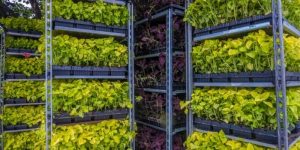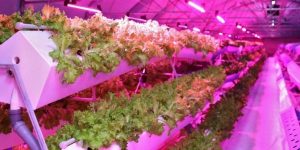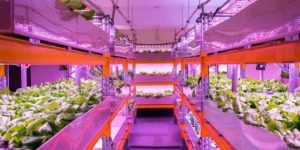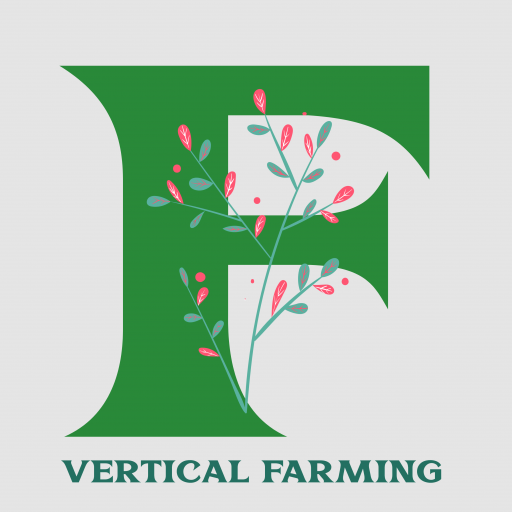#.Top popular types of vertical farming in 2022.
What exactly is vertical farming?

Vertical farming is precisely what it is. It is a method of farming on vertical land instead of traditional horizontal farming. Utilizing layers that are vertically stacked, farmers can grow an abundance of food on the same amount of surface. The layers are often constructed into structures such as high-rises, shipping containers, warehouses, greenhouses (like the one we have), or other places that would otherwise be insufficient to cultivate.
But vertical farming is much more than just putting up plants and trying to get the best results. It requires the manipulation of light, temperature, and humidity in order to be successful. If the delicate balance isn’t maintained, it’s possible to ruin an entire crop in the same way a traditional could in the event of a flood or drought.
introduction
The vertical agriculture methods used for vertical farming are diverse, and their use is dependent on the business or farmer’s requirements, as well as their capital, area, niche market, and overall goal.
Vertical farms are generally located in large industrial buildings with ample space for growth upwards. Other types of farms can be set up inside shipping containers.
Whatever the size of the farm, it should be large enough to house all of the components needed for successful plant growth, such as growing space, water supply, and irrigation system, handling storage, and a worker unit.
The entire array of plants can be situated within the exact same farming unit, but the plants are kept in a separate, secluded area that forms the center of the farm vertically.
Many vertical farming methods are utilized to cultivate vegetables on vertical farms. These use soil-free techniques to provide plant nutrients.
Growing soil-free systems are the reason vertical farming is highly successful due to its efficiency, sustainability, and financial benefits.
Different kinds of vertical farming
- Hydroponic
- Aeroponic
- Aquaponics
A vertical farm may take different shapes, forms, and sizes, ranging from simple to extremely complicated. Vertical grow systems are two levels or wall-mounted up to huge warehouses that are many stories tall. With all the variations in dimensions and shapes, vertical farms share one thing in common: they all utilize soil-free systems. They are aeroponic, hydroponic, aquaponics, and hydroponic systems.
#.Hydroponic

This is the most common type of system utilized in vertical farming, regardless of whether the operation is a commercial or small-scale one. Hydroponic systems circulate water that is rich in nutrients through the plant’s root zones, submerging them. The solution is carefully monitored and circulated throughout the system to ensure its chemical makeup is in the appropriate mixture. Systems for hydroponics require a tank for the water pump, a water tank, tubing made of PVC, and baskets for housing plants. Based on the preferences of the grower, additional equipment could be required for growing, such as clay stones or another type of growing media.
#.Aeroponic

This type of system is rooted in the stars, which were developed in the 1990s by NASA when NASA was looking for more efficient and creative indoor gardening techniques to be used for the space station and other missions. Aeroponic systems differ from hydroponic systems since they use an air or mist environment with no soil and very little water. These systems aren’t so common among commercial growers in the horticulture market. However, they are beginning to receive more attention attention due to the reduced water usage and the overall capability to cut down on inputs. The plants cultivated inside these systems have proven to be healthier and possibly more nutritious since the plants grown in these systems absorb more nutrients.
#.Aquaponics

Aquaponic systems take the hydroponic system a step further by combining fish and plants in an ecosystem. Fish are cultivated in indoor ponds and produce much nutrient-rich waste that is utilized as a source of feed for plants within the vertical farms. The plants, in turn, remove and purify the waste and then recycle it into the ponds for fish.
While aquaponics is utilized in smaller-scale vertical farms, most commercial vertical farm systems concentrate on the production of certain fast-growing vegetables and do not include an aquaponics element. This reduces costs as well as production concerns and boosts the effectiveness. But, the new aquaponic systems could assist in making this closed-cycle system more well-known.
Additional Classifications
Vertical farming systems may be further classified based on the kind of structure used to house the farming system.
Vertical farms built by building are usually located in abandoned buildings in cities, like Chicago’s “The Plant” vertical farm, which was constructed inside an old pork packing plant. Construction of new buildings is also employed in vertical farms like the multi-story vertical farm attached to an already existing parking structure in Jackson Hole, Wyoming.
Vertical farms with shipping containers are becoming increasingly popular. Vertical farms are constructed using 40-foot shipping containers that are typically used to transport goods across the globe. Containers for shipping are currently being upgraded by a variety of companies to create self-contained vertical farms equipped with LED lighting, drip-irrigation systems, and shelves that can be stacked vertically to start and grow diverse plants. Self-contained units are equipped with grown-management systems controlled by computers that let users monitor the entire system remotely using the internet or a smartphone.
Operations are classified according to the kind of system they are located in, but they may also be classified according to the kind of structure they’re cultivating in. Vertical farming is expanding in areas that do not have greenhouses used in modern times. Urban and urban regions use abandoned structures and warehouses to plant various crops, including food. Many businesses and programs are opening their doors in urban areas. Vertical farms in shipping containers are growing in popularity and use forty-foot containers for shipping. The shipping containers are renovated and equipped with LEDs, drip irrigation, and vertically stacked shelves. They can be used to plant and cultivate a variety of plants.
Conclusion
As the world moves toward becoming more efficient, businesses are embracing new methods to increase their trade with speed and quality. Agriculture is beginning to move away from traditional vertical farming and has been able to produce larger crops with less space by using vertical farming.
Certain techniques have been tested, and others are being developed, but the more methods are developed, the better farming practices will be. It can help to make the most of space and resources, as well as grow profitable crops and ultimately improve efficiency across the board.

